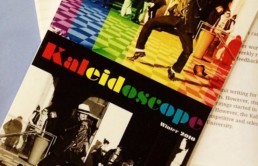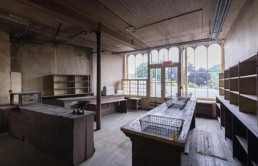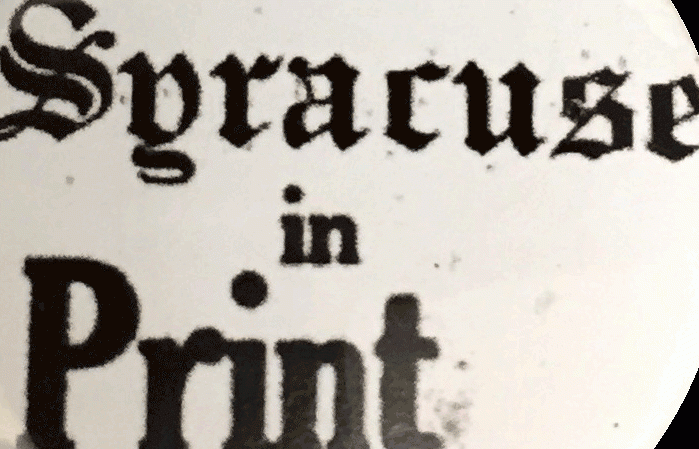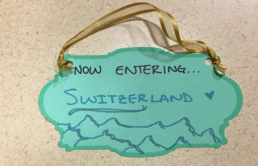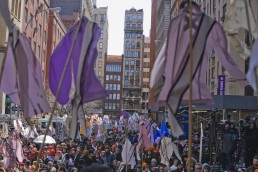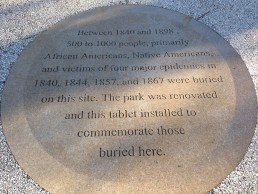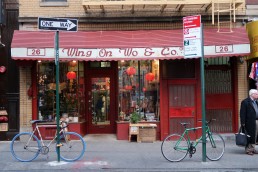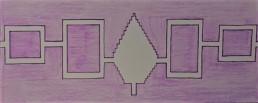Bordering the Imaginary: Art from the Dominican Republic, Haiti, and Their Diasporas
An art exhibition and related programming that explored the historical relationship of the Dominican Republic, Haiti, and their diasporas in New York.
by Abigail Lapin Dardashti
Exhibit

Abigail Lapin Dardashti
CUNY Graduate Center
2015-2016
Press
Share
This project, composed of various programs in New York locations and an art exhibition at BRIC in Brooklyn, explored the historical relationship of the Dominican Republic, Haiti, and their diasporas in New York. The material was aimed at a broad audience and specifically targeted the diasporic communities in New York. The project culminated with intensive on-the-ground conversations about race, migration, and belonging with community members, activists, artists, writers, and scholars, but also expanded as the conversation moved to a transnational setting that included communities in the Dominican Republic and Haiti as well as those of New York.
Fellowship and Collaborative Symposium
In 2015-16, I had the privilege of being a Public Humanities Fellow at Humanities NY. With the goal of creating a community-oriented art exhibition about the historical relationship between the Dominican Republic and Haiti, I conducted extensive research and spoke with community members, artists, activists, and scholars. Since 2013, the Dominican Republic had engaged in legal action that called for deportation of undocumented first, second, and at times third generation Haitian immigrants living on Dominican soil. These events sparked much discussion, especially with the diaspora in New York. Going to many events on the topic, I perceived that these events elided the history of the countries’ relationship. This context would help to elucidate the current problems and discussions occurring in New York. As an art historian, I considered the visual arts an ideal medium to introduce this narrative to a broad audience and bring together the very large New York Haitian and Dominican diasporas. When I was awarded the fellowship, I began working on two projects; first a short-term, non-academic symposium that would bring together artists, activists, community members, as well as scholars, and second, a long-term exhibition project that would take place at a community-oriented gallery in New York that still maintained strong ties with the city’s contemporary art world.
The symposium, Art, Race, and Fluidity in the Dominican Republic and Haiti, was composed of two panels, an art performance, and a discussion about the performance. The first panel explored sites of encounter between peoples of African descent in Hispañola, which challenge the stereotype of the country’s ‘denial’ of blackness. Through funding from IRADAC, the DSC, and the Center for the Humanities at the Graduate Center, CUNY, I invited Jean-Michel Théodat, a professor in Haiti who focuses on the geographical history of the border, the Miami-based visual artist Edouard Duval-Carrié, and Diógenes Abreu, an activist and writer based in Washington Heights, New York. The second panel looked at how contemporary U.S.-based Dominican and Haitian artists oftentimes explore the 19th century history of exchange between both countries in order to reflect on the similarities, and not differences, at the root of each culture. For this panel, presentations included those of two New York-based artists, Dominican American Scherezade Garcia and Haitian American Cybil Charlier, as well as art historian Edward Sullivan. To conclude the symposium, a multi-media performance was presented by Dominican American artist Charo Oquet, and was followed by a conversation.
The audience at the symposium was incredibly diverse; there were students, scholars, community members, artists, activists, and many identified as part of the Dominican and/or Haitian diasporas. This event built the foundation for the conceptualizing of the broader exhibition, and the first step was to find a collaborator that had a space and fit the criteria explained above. I encountered spaces in New York that told me that the topic was too controversial, or that if I removed the Haitian artists and only included the the Dominican ones, they would work with me on the exhibition. Finally, I luckily found BRIC, an amazing community-oriented gallery and larger organization in Brooklyn that is also very respected in the contemporary art world. Engaging with my ideas and goals, BRIC worked with me to secure funding and organize the exhibition and programming in their space in Brooklyn, reaching out to the Dominican and Haitian communities throughout New York. During the fellowship year, I was also able to further expand on my research by publishing about it in Public Art Dialogue and Diálogo.
The Exhibition
The exhibition Bordering the Imaginary: Art from the Dominican Republic, Haiti, and Their Diasporas, was an exhibition of contemporary artworks at BRIC that included an array of media and mined the interrelated histories of two Caribbean countries that share a single island, their tradition of cultural and social exchange, and the racism and social injustices that have long impacted the people of both nations. The exhibition, sponsored by Goya, brought together Dominican and Haitian artists based in both the island and in the United States, creating a vivid visual narrative and opportunities for discourse that reconsider differences and commonalities between the distinct but intertwined communities of these countries. Through the exhibition, accompanying catalogue, and public programs, Bordering the Imaginary investigated definitions of nationhood as these relate to these two adjacent countries whose shared border bears a racialized history, yet has also managed to persist as a space of cultural fluidity and collaboration.
Bordering the Imaginary featured artwork by nineteen artists, including Edouard Duval-Carrié, Vladimir Cybil Charlier, Patrick Eugène, iliana emilia garcia, Scherezade Garcia, Leah Gordon with André Eugène & Evel Romain from atis rezistans, Fabiola Jean-Louis, Tessa Mars, Pascal Meccariello, Groana Meléndez, Alex Morel, Raquel Paiewonsky, Raúl Recio, Freddy Rodríguez, Julia Santos Solomon, Nyugen E. Smith, and Roberto Stephenson.
The exhibit was organized into four sections. The first, Revolutions and Unifications: The Contemporary Resonance of 19th Century History, explored how both Dominican and Haitian contemporary artists repurpose images and ideas from the 19th century in order to recover the history of cultural and socio-political exchange during this period, up until the murderous anti-Haitian reign of Dominican Dictator Rafael Trujillo. In the works here, artists like Freddy Rodríguez and Vladimir Cybil Charlier take up subjects such as the Maroons—Africans who escaped slavery and lived in hiding in the island’s mountainous regions, who managed to organize and insurrect. Other artists explore the 1791 slave revolt that evolved into the Haitian Revolution. The latter is illustrated in work by Tessa Mars, whose self-portraits see her envisioning herself as various Haitian revolutionary leaders. The 1800s saw moments of unity on Hispaniola, and the embrace of blackness in the Dominican Republic, prior to Trujillo’s tyrannically “whitening” rule. Works in this section also look into the religious impositions of colonialism, the sexual economy of slavery, the exploitation of black bodies in the creation of white wealth, and the Dominican Republic’s independence.
The second part of the exhibit, Borders, Fragmentations, and Intertwinings, explored the border itself, a political demarcation that has been both the site of violence and porous exchange between Dominicans and Haitians. Dominican artist Pascal Meccariello’s installation Mapping on Broken History, for instance, uses fragmented maps and pages from Dominican and Haitian history textbooks; he covers his fluid rendering of the island with images of Trujillo, at once demonstrating the remnants of colonialism and the endurance of fluidity despite it. Edouard Duval-Carrié’s acrylic work, El tigere y el congo, depicts, on either side of the river that runs along the border, concepts of masculinity and power in Haiti and the Dominican Republic. Another work, the film Ti tonton bat tanbou(Little Uncle Plays the Drums), made by Haitian artists André Eugène and Evel Romain and British artist Leah Gordon, is an artistic gesture towards the transcendence of the borderline, and a transnational Hispañolan sensibility, documenting wooden figurines made in the artists’ studio crossing the border and being sold to tourists in the Dominican Republic. The works in this section depict how the identities of residents in Hispaniola and the diaspora intertwine and crystallize, forming new characteristics that go beyond those assigned by the nation-states.
Bodies Transformed, the third section, features works that reject traditional portraiture while representing identity through commonplace objects specific to Hispaniola in order to challenge race-based definitions of identity. Responding to this idea, Dominican-American artist iliana emilia garcía contributes a major, site-specific installation, The Sage and the Dreamer, composed of handmade wood and straw chairs sold throughout the countryside in both Haiti and the Dominican Republic. Wrapped around a pillar in BRIC’s gallery and approximately 20 feet tall, the chairs resemble a tree and act as a symbol of individuality, domesticity and communal exchange between Haitians and Dominicans. Also drawing on objects’ ability to elicit the complexities of a place, in his Made in Haiti series, photographer Roberto Stephenson collects handmade objects from the streets of Port-au-Prince, and sheds new light on their intricate detail and the creative ingenuity of people who make due with so little.
The final section of the exhibition, Memories of a Utopian Island and the Future, is a collaboration between Haitian-American artist Vladimir Cybil Charlier and Dominican-American artist Scherezade Garcia to be presented in BRIC’s Project Room. It features animated videos and an installation, and addresses various contemporary issues related to the diaspora. One such video is Conversation Thread, which sees the artists speaking French, English, Spanish, and Haitian Creole as their silhouettes intertwine. Lapin Dardashti writes, “Memories of a Utopian Island does not claim a sameness between the two countries. Indeed, numerous works in Bordering the Imaginary express distinct aspects of each nation … The countries maintain different cultures and modes of self-definition, but also share many cultural, economic, and historical notions that complicate the kinds of identities constructed by political powers.” Bordering the Imaginary aims to challenge these historically embedded categories, wrought as they often are by racist ideologies, through creativity and collaboration.
Exhibition-Related Artist Residency in the Dominican Republic, and Exhibition-Related Programming
In conjunction with Goya’s lead sponsorship of the exhibition and as part of the company’s Goya Gives initiative, the artist Iliana Emilia Garcia traveled to the Orfanato Niños de Cristo (Children of Christ Orphanage) in La Romana, located on the Dominican / Haitian border, which was founded by Henry Cardenas and Marc Anthony of the Maestro Cares Foundation. Garcia delivered hands-on art workshops over a number of days that included printmaking, sculpture, and painting, with the sessions culminating in a group project for public installation. BRIC’s community investment begins in Brooklyn through the Arts for All approach but extended far beyond with Bordering the Imaginary.
Symposium: Art and Literature in Contemporary Dominican Republic, Haiti, and their Diasporas
Thursday, March 15, 1:00-8:00pm at The Center for the Humanities at the Graduate Center, CUNY, 365 Fifth Avenue, Room C198, New York, NY
This conference, organized by Abigail Lapin Dardashti, explores the production of literature and visual art by contemporary artists and writers in Haiti, the Dominican Republic, and their Diasporas.
Link: https://www.centerforthehumanities.org/programming/art-and-literature-in-contemporary-dominican-republic-haiti-and-their-diasporas
Coffee & Conversation: Bordering the Imaginary
Saturday, March 17, 12:00-1:00pm
Event featured a gallery talk with curator Abigail Lapin Dardashti and exhibition artists Vladimir Cybil Charlier, Scherezade Garcia, Fabiola Jean-Louis, and Freddy Rodríguez, who will provide an in-depth discussion of the context surrounding the exhibition; free coffee included.
Facing Contemporary Hispaniola: Panel Discussion
Wednesday, April 4 at 7:00pm
Curator Abigail Lapin Dardashti moderated a panel discussion with exhibition artists Patrick Eugène, iliana emilia garcia, Alex Morel, and Nyugen E. Smith, who will discuss their work and offer perspectives on the relationship between Haiti and the Dominican Republic.
Free Tours for Groups & Individuals
Wednesdays, 10:30am & 11:30am
Visit BRICartsmedia.org/exhibitiontours for more information.
Haiti-NYC-DR: Reflections from the Diaspora
Saturday, April 28 at 4:00pm; Part of BRIC OPEN: Borders (April 26-29, 2018)
Four leading voices of from the Haitian and Dominican diaspora—including Suhaly Batista-Carolina, Edward Paulino, Albert Saint Jean, and Ibi Zoboi—discuss their personal experiences of the relationship between the countries, the legacy of their intertwined histories, and the unique character of the Haitian and Dominican life in NYC, through a public program and essays. Essays available at bricartsmedia.org/Haiti-NYC-DR.
This program is presented in partnership with the Haiti Cultural Exchange.
About this Fellow
As a Franco-Dominican American Ph.D. candidate at The Graduate Center, CUNY, Abigail Lapin Dardashti specializes in postwar Latin American and Latino art. Her research focuses on formations of ethno-religious and racial identity in 20th-century art of the Americas, with a concentration on the Dominican Republic and Brazil. In 2017-2018, she conducted dissertation research in France, Senegal, and Brazil through a Fulbright IIE Fellowship and an International Dissertation Research Fellowship, Social Science Research Council. In 2015, she was a Mellon Curatorial Fellow at the Studio Museum in Harlem and in 2016-17, she was a Museum Research Consortium Fellow in the Department of Photography at The Museum of Modern Art, NY. The following year, she was guest curator at Taller Puertorriqueño in Philadelphia and curated Unpacking Hispañola: Scherezade Garcia and Firelei Báez. Her work on Dominican and Dominican American art emerged through fellowships at the Museo de Arte Moderno, Santo Domingo, in 2012; the Smithsonian American Art Museum, Washington D.C. in 2014; and the New York Council of the Humanities (now Humanities New York) in 2015-16. This research was recently published in the peer-reviewed journals Public Art Dialogue and Diálogo. She has also served as Graduate Teaching Fellow at City College, CUNY in 2014-17. Lapin received a B.A. in Spanish at New York University and an M.A. in Art History at the Institute of Fine Arts (NYU).
Hero images—Main and Background: from the Bordering the Imaginary exhibit at BRIC. Credit: Jason Wyche.
Related Content
Upstate Historical
An interactive website that brings the rich history of Upstate New York to life through stories and tours…
The History Buffs
A podcast series—founded by seven historians from Buffalo, NY—that explores diverse topics from a historical perspective…
The Kaleidoscope Project
The Kaleidoscope Project was founded on a simple premise: when kids have access to stories that validate their lives, they feel more empowered to learn.
The Sunday List
A restoration of a bakery run by Jewish immigrants that served the entire community in Kingston, NY for about 80 years.
November 1, 2018Oral History,Remembrance,Local History,PreservationExhibit
Syracuse in Print
Syracuse in Print celebrates our analog now by partnering with local libraries, makerspaces, and other community organizations that value print culture in its eclectic, varied forms.
Literature in Medicine
A project bringing college students into local hospitals to explore the intersection of art and health.
Remember the Triangle Fire
A night of multi-media commemorating the Triangle Shirtwaist Factory fire and supporting continuing efforts to improve labor conditions around the world.
Making the Public History Classroom Public
Fieldwork by students at the Olde Towne of Flushing Burial Ground Conservancy which resulted in major projects throughout New York City.
September 10, 2019Local History,Education,PreservationSchool Curriculum
Chinatown Movements: Past, Present, & Futures
A series of public events highlighting historic and contemporary social movements in Manhattan's Chinatown.
September 11, 2019Oral History,Remembrance,Local History,Preservation,DiasporaEvent
Learning the Seneca Indian Language
A website introducing visitors to the Seneca Indian language.
September 16, 2019Language,Preservation,Native AmericanWebsite










